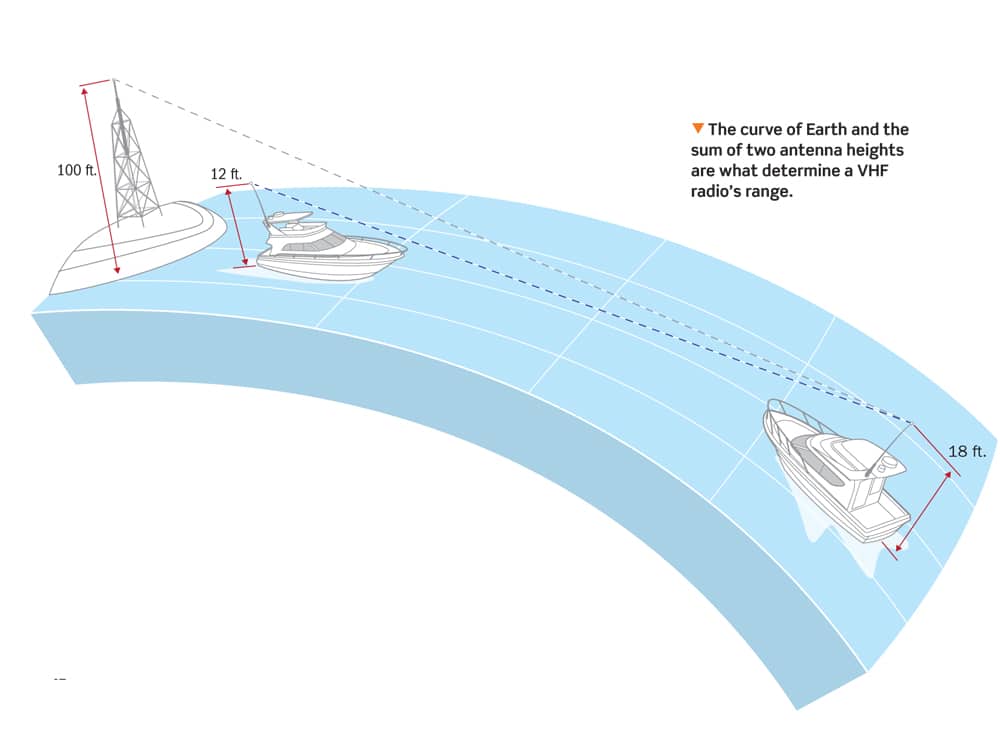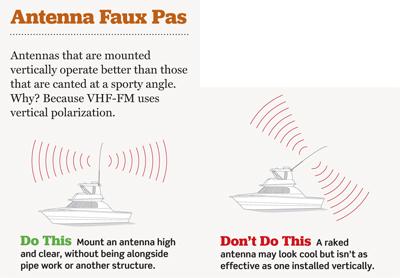Ask 10 boaters about the range their marine VHF radio achieves and you’ll get 10 different answers. Just how far can you count on your distress call being heard?

Marine VHF Radio Range
Earth Is Round
Marine VHF radios operate between 156 and 172 MHz, a sliver of the very high frequency band of radio waves between 30 and 300 MHz. It’s FM radio. We know from taking trips in our cars that we have to change stations more frequently to get good reception when listening to FM (usually while a favorite song is playing).
Power output is often thought to increase range, but really, the difference in range between a 25-watt fixed marine VHF radio and a 5-watt handheld is due to the fixed mount’s antenna being taller, and therefore it can “see” farther. More power will allow you to punch through static and other radio traffic better, but only within the range dictated by antenna height. Marine VHF radios work on a line-of-sight basis. That is, they can transmit and receive to and from another antenna as long as that antenna is above the horizon. How far is that? Standing in the cockpit of a boat, the distance to the horizon for most adults is about three miles.
Can You Hear Me Now?
Mount an 8-foot antenna so that it’s 12 feet above sea level, and the horizon increases to about 4.5 miles. Of course, we’ve all communicated farther than that with a VHF radio. That’s because the height of the other antenna also comes into play.
Say your buddy has an antenna mounted atop his large cruiser at 18 feet above sea level. Combined with the 12-foot height of your antenna, the two of you could converse while about 6.7 miles apart. If the Coast Guard’s antenna is 100 feet tall, you can expect a reliable range of about 13 miles. Your buddy’s 18-foot antenna would net him a range of about 13.3 miles.
The actual distances are a bit farther, due to atmospheric refraction, but these are the distances you can count on, making satellite phones, EPIRBs (emergency position indicating radio beacons) and PLBs [(personal locator beacons)](personal locator beacons very wise for anyone cruising open waters. To see a chart of the Coast Guard’s VHF coverage in your area, visit navcen.uscg.gov.








